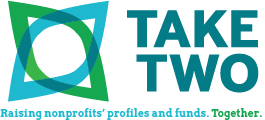
Strategic Planning As A Collaborative Project
Many of the groups we come across and work with seem to recognize the value of strategic planning. Many also invest time and resources to conduct some level of strategic planning for their organizations. We find, however, that the majority of these groups do not approach strategic planning as a comprehensive and collaborative project.
At TakeTwo, the best planning projects we have been a part of have been deeply collaborative in nature. When we get signed on to the planning process, we build in time to talk to as many stakeholders of an organization as possible. We talk to board and staff members, institutional donors, individual donors, volunteers, and program partners and consumers. We conduct confidential conversations during which we ask for candid, honest, and thoughtful responses to questions about the organization’s mission, vision, programming, performance, and opportunities. We give people the chance to reflect on why they care about the organization and what encourages them, or holds them back, from giving their time and money. The information we get from this process is invaluable – honest to goodness gold.
We take the information and feedback people offer and bring it all together into a cohesive and ambitious plan for the future, inclusive of specifics about what should continue, improve, and be expanded within the organization. By talking to many people during the strategic planning, we:
• Get access to new ideas for events and programs;
• Gather impressions of the organization’s image, brand, and reputation;
• Create buy-in and re-energize donor and volunteer pools; and
• Identify new prospects for funding, volunteer leadership, and program partnerships.
And not only to we identify these opportunities, but by inviting volunteers and donors to participate in the strategic planning, we open the door and create new opportunities for leadership and investment.
We highly recommend conducting strategic planning that uses deeply collaborative approaches. After all, it takes a community of people to make any nonprofit mission succeed. Hence, the planning behind the organization’s mission and work should include the thoughts and ideas of that community. What better way is there to create deep investment and ownership in the community you serve and hope to involve?





